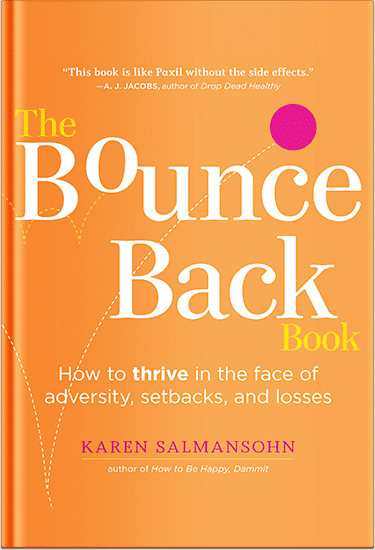 Designing a home that accommodates the needs of seniors is essential for ensuring their safety, comfort, and independence. As mobility and physical abilities change with age, thoughtful planning becomes crucial in creating a supportive living environment.
Designing a home that accommodates the needs of seniors is essential for ensuring their safety, comfort, and independence. As mobility and physical abilities change with age, thoughtful planning becomes crucial in creating a supportive living environment.
Whether you’re modifying an existing space or building anew, focusing on key considerations can make all the difference in enhancing the quality of life for older adults.
I’m sharing about this topic of how to design a senior-friendly home because I’m an award winning designer – and want to share tips to be creative when it comes to designing a senior friendly home.
7 Tips To Design a Senior-Friendly Home
1. Prioritize Accessibility
One of the most crucial aspects of a senior-friendly home is accessibility. As mobility becomes more limited with age, it’s essential to ensure that the home is easy to navigate. This begins with wide doorways and hallways that can comfortably accommodate walkers or wheelchairs. Standard doorways may be too narrow, creating challenges for those who rely on mobility aids.
In addition to wider doorways, consider removing thresholds between rooms. Thresholds, even when only slightly raised, can pose a tripping hazard. By eliminating these obstacles, you create a smoother transition between spaces, reducing the risk of falls. This is particularly important in homes where seniors may be at a higher risk of injury due to decreased balance or strength.
2. Bathroom Safety
The bathroom is one of the most dangerous areas in the home for seniors, making safety a top priority. Slippery surfaces and hard fixtures can easily lead to accidents. One of the most effective ways to enhance bathroom safety is by installing grab bars near the toilet and inside the shower. These bars provide much-needed support and can prevent falls when moving between a standing and sitting position.
Another key consideration is a shower replacement that accommodates seniors’ needs. Traditional bathtubs or showers with high edges can be difficult and unsafe to step over. Opting for a walk-in shower or one with a curbless entry can significantly reduce the risk of falls, making the bathroom a safer and more accessible space for seniors.
3. Install Proper Lighting
Good lighting is essential in a senior-friendly home, as it helps prevent accidents and makes it easier for seniors to move around safely. As we age, our eyes require more light to see clearly, so it’s important to ensure that all areas of the home are well-lit. This includes not only the main living spaces but also hallways, staircases, and bathrooms.
Nightlights are a simple yet effective addition to any senior-friendly home. Placing nightlights in hallways and bathrooms can guide seniors during late-night trips to the bathroom, reducing the likelihood of falls. Additionally, consider installing motion-sensor lights in high-traffic areas. These lights automatically turn on when someone enters the room, providing immediate illumination without the need to fumble for a switch.
4. Flooring Considerations
Flooring plays a significant role in the safety and accessibility of a senior-friendly home. Slippery or uneven surfaces can easily lead to falls, so it’s important to choose materials that provide a stable footing. Non-slip flooring materials, such as vinyl or low-pile carpet, are excellent choices for preventing accidents. These options offer traction and reduce the risk of tripping.
In addition to selecting the right materials, it’s also important to ensure that flooring is consistent throughout the home. Avoid abrupt changes in flooring types between rooms, as these can create tripping hazards. For example, transitioning from a smooth tile floor to a thick carpet without a gradual slope can cause a senior to lose their balance. By maintaining a uniform surface, you create a safer environment.
5. Easy-to-Use Fixtures and Hardware
Seniors often struggle with traditional fixtures and hardware, which can be difficult to operate due to arthritis or reduced hand strength. To make a home more accessible, it’s important to choose easy-to-use fixtures and hardware that accommodate these limitations. Lever-style door handles, for example, are much easier to operate than traditional round knobs. They require less grip strength and can be easily opened with a downward push, making them ideal for seniors.
Similarly, faucets should be easy to turn on and off. Lever-style faucets or touchless options are excellent choices, as they require minimal effort to use. Touchless faucets, in particular, offer the added benefit of automatic shut-offs, reducing the risk of water damage if the faucet is accidentally left running. These small adjustments can make daily tasks much easier for seniors, enhancing their independence and comfort.
6. Create a Single-Level Living Space
When designing a senior-friendly home, one of the most practical considerations is to create a single-level living space. As people age, navigating stairs can become increasingly difficult and dangerous. By ensuring that all essential living areas—such as the bathroom, bedroom, laundry, and kitchen—are on the same floor, you minimize the need for seniors to climb stairs daily.
If a single-level home is not possible, consider installing stair lifts or home elevators. These devices can significantly improve safety by providing an alternative to using stairs. A stair lift allows seniors to move between floors without the risk of tripping or losing balance, while a home elevator offers a more seamless transition between levels. These additions can be life-changing for seniors, offering them continued access to all parts of their home without compromising safety.
7. Comfortable and Supportive Furniture
Furniture plays a key role in creating a comfortable and safe environment for seniors. It’s important to select pieces that are both supportive and easy to use. For example, chairs and sofas with firm cushions and sturdy armrests can make it easier for seniors to sit down and stand up without assistance. Soft, low-seating furniture might be stylish, but it can be challenging for seniors to use without risking a fall.
Adjustable beds and recliners are also excellent options for a senior-friendly home. These pieces of furniture can be customized to meet individual comfort needs, providing support where it’s most needed. An adjustable bed, for instance, can be raised or lowered to make getting in and out of bed easier. Recliners with built-in support and lift functions can help seniors relax comfortably without struggling to get up.
Recap: Design a Senior-Friendly Home
Designing a senior-friendly home requires careful consideration of accessibility, safety, and comfort. Each aspect of the home, from the layout to the furniture and even the lighting, should be tailored to meet the unique needs of older adults. By focusing on these key considerations, you can create a living environment that supports independence and enhances the well-being of seniors, allowing them to enjoy their golden years in the comfort and security of their own homes.
Live Your Best Life
Explore my bestselling and therapist recommended audio and video program: The Anxiety Cure Course.
P.S. Before you zip off to your next Internet pit stop, check out these 2 game changers below - that could dramatically upscale your life.
1. Check Out My Book On Enjoying A Well-Lived Life: It’s called "Your To Die For Life: How to Maximize Joy and Minimize Regret Before Your Time Runs Out." Think of it as your life’s manual to cranking up the volume on joy, meaning, and connection. Learn more here.
2. Life Review Therapy - What if you could get a clear picture of where you are versus where you want to be, and find out exactly why you’re not there yet? That’s what Life Review Therapy is all about.. If you’re serious about transforming your life, let’s talk. Learn more HERE.
Think happier. Think calmer.
Think about subscribing for free weekly tools here.
No SPAM, ever! Read the Privacy Policy for more information.
One last step!
Please go to your inbox and click the confirmation link we just emailed you so you can start to get your free weekly NotSalmon Happiness Tools! Plus, you’ll immediately receive a chunklette of Karen’s bestselling Bounce Back Book!


 Designing a home that accommodates the needs of seniors is essential for ensuring their safety, comfort, and independence. As mobility and physical abilities change with age, thoughtful planning becomes crucial in creating a supportive living environment.
Designing a home that accommodates the needs of seniors is essential for ensuring their safety, comfort, and independence. As mobility and physical abilities change with age, thoughtful planning becomes crucial in creating a supportive living environment.